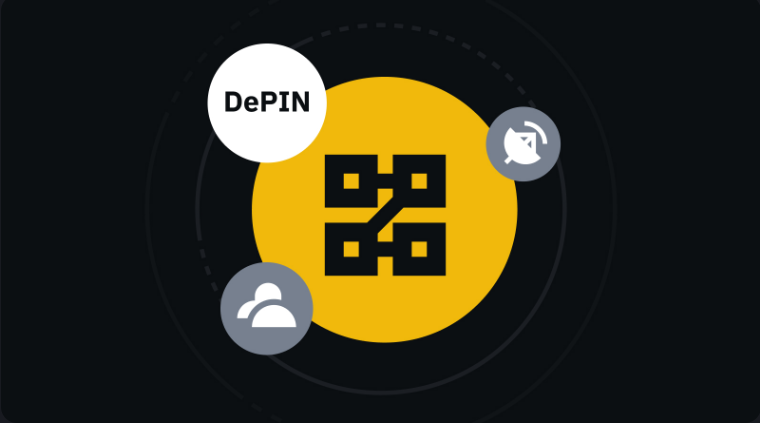
Key Points
DePIN extends the decentralization principles of blockchain to tangible infrastructure such as energy grids and supply chains. The network leverages blockchain and IoT technologies to create autonomous and transparent systems.
DePIN can enhance the security, efficiency, and transparency of physical infrastructure, providing democratized access to resources like energy and transportation. It also promotes economic participation through peer-to-peer transactions and token rewards.
Introduction
From finance to art, blockchain has revolutionized every aspect of our lives. However, this revolution is not limited to the digital world. Blockchain can also be applied to multiple real-world domains related to the concept of Decentralized Physical Infrastructure Networks (DePIN).
What is a Decentralized Physical Infrastructure Network?
DePIN refers to the application of blockchain technology to physical infrastructure and systems. The network aims to use blockchain and other technologies to create decentralized networks for physical infrastructure such as energy grids, supply chains, telecommunications, and transportation systems.
How DePIN Works
DePIN involves using blockchain technology to decentralize network control. Typically, DePIN relies on a combination of blockchain technology and the Internet of Things (IoT).
Blockchain is a secure and transparent ledger that records transactions and data exchanges within the network. By providing an immutable record of all transactions, it ensures trust and transparency. Meanwhile, the IoT consists of internet-connected devices that collect and exchange data in real time. In DePIN systems, these devices communicate with each other and with the blockchain database, enabling autonomous and responsive interactions within physical infrastructure.
DePIN leverages blockchain to distribute authority across the network and can be applied to various sectors, including energy, supply chains, telecommunications, data storage, transportation, and real estate.
For example, in the energy sector, a decentralized network can enable peer-to-peer energy trading, with all interactions transparently recorded on the blockchain. Smart contracts can automate transactions, improving efficiency and promoting the use of renewable energy. In some cases, users may also receive cryptocurrency rewards as incentives to encourage participation and growth.
Why DePIN Matters
Security and Efficiency
DePIN can eliminate single points of failure and reduce the risks of tampering or manipulation, thereby enhancing the security and efficiency of physical infrastructure. By applying blockchain technology, transactions and data exchanges can be secured through cryptography, and distributed databases can help prevent attacks or unauthorized access.
Transparency and Traceability
In industries like supply chain management, DePIN can provide greater transparency and traceability. Businesses can record every step of production and distribution on the blockchain, ensuring products are authentic and intact. This helps prevent fraud, counterfeiting, and other illegal activities.
Democratization of Resources
DePIN has the potential to democratize access to essential resources like energy and transportation. Individuals and communities can directly participate in the production, distribution, and utilization of these resources, rather than relying on centralized providers. For instance, through a decentralized network, homeowners can generate electricity and sell excess power to neighbors, creating a more equitable and sustainable energy ecosystem.
Economic Empowerment
By decentralizing control over physical infrastructure, DePIN empowers individuals and communities. It enables peer-to-peer transactions and incentivizes participation through token rewards. This creates new opportunities for entrepreneurship and innovation, particularly in underserved or marginalized communities.
Examples of DePIN Projects
Filecoin
Filecoin uses blockchain technology to address the demand for decentralized storage solutions. The project allows users to rent out unused storage space and earn cryptocurrency rewards. This decentralized storage network ensures data security, redundancy, and availability through a distributed network of storage providers.
Render
Render is a DePIN project focused on providing decentralized GPU rendering solutions. It connects node operators looking to monetize idle GPU power with artists who need scalable resources for intensive 3D rendering tasks and applications. Beyond offering a decentralized GPU computing network, Render also provides a platform for artists and developers to create services and applications.
The Graph
The Graph is a decentralized protocol for indexing and querying blockchain data. The project focuses on organizing data while providing easy access for everyone. Graph Explorer enables developers to retrieve, discover, and publish all the public data needed to build decentralized applications (DApps).
Challenges and Future Prospects
The potential of DePIN is vast, but it also faces several challenges. Regulatory hurdles, technical scalability issues, and interoperability problems are major barriers to widespread adoption. Additionally, integrating blockchain technology with physical systems requires robust security measures and user-friendly interfaces.
Nevertheless, despite these challenges, the future of DePIN remains promising. As technology continues to evolve and innovate, DePIN projects are likely to overcome these obstacles, unlocking new opportunities for decentralized physical infrastructure. By empowering individuals and communities to shape their own infrastructure and resources, DePIN has the potential to transform how we interact with the physical world.
Conclusion
DePIN, or Decentralized Physical Infrastructure Networks, revolutionizes tangible infrastructure by applying blockchain and IoT technologies, ensuring autonomy and transparency. The network enhances security, efficiency, and transparency while democratizing access to essential resources like energy and transportation.
















